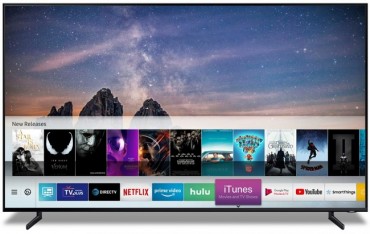Austin, Texas, Feb. 22 (Korea Bizwire) — The Open Compute Project Foundation (OCP) announces today the high level results of a follow up assessment of the market impact of the Open Compute Project worldwide. For a second year, OCP has engaged IHS Markit, a world leader in critical information, analytics and solutions, to determine the adoption and impact of OCP gear in the technology industry. Since its inception, OCP has worked to drive innovation in and around the data center industry, bringing together thousands of engineers from nearly two hundred member organizations. The demands on the modern datacenter continue to expand with the growth of IOT, security and edge computing, as well as increasing energy consumption requirements.
IHS Markit interviewed OCP members, suppliers and service providers, as well as incorporated their own in-depth industry research to determine revenue by region and vertical worldwide, as well as update their forecast through 2022. In order to ascertain a more accurate assessment of true marketplace adoption, usage by OCP Board member companies Facebook, Goldman Sachs, Intel, Microsoft and Rackspace was excluded from this study.
Among the preliminary findings:
- 2017 actual non-board revenue was $1.16 billion, just shy of the original forecast of $1.18 billion
- 2018 non-board OCP revenue tops the 2017 forecast, reaching $2.56 billion, compared to a forecast of $1.84 billion, with year-over-year growth of 120%
- 2017 Non-Board OCP revenue actuals show increased market share, from .87% to .91%, while overall Market Value dropped from $137 billion to $127 billion
- 2022 non-board OCP revenue share is expected to climb to more than 5% by 2022, at $10.7 billion, with a CAGR of 56%
- Servers, Storage and Networking are the fastest projected growth categories, with PON a potential high-growth area. Markets are just forming for disaggregated cell tower equipment, but Telco spend is expected to surpass Hyperscalers by 2021.
- The Government sector actually passed financial institutions in non-board OCP spending in 2017, while automotive and manufacturing is expected to have the highest 5-year CAGR. Healthcare is in the early stages of OCP adoption.
- There were no large changes in the forecast for regional growth – America’s still dominate due to Hyperscalers and Financial, but also now driven by Telco.
- APAC will surpass EMEA by 2020 with a CAGR of 108%, compared to EMEA at 59%.
Furthermore, the drivers of adoption of OCP are growing more diverse – cost reduction and power efficiency are still the biggest reasons why, but the market is now realizing that feature flexibility and conformance to those specifications approved by OCP provide a measure of “comfort” to the market.
“We are pleased that the adoption momentum continues and accelerates, and we value the insight provided by the study regarding barriers, challenges and opportunities. We are committed to continued improvement in the entire ecosystem to support the future growth.” stated Rocky Bullock, CEO for the Open Compute Project Foundation.
“The market ecosystem for OCP-certified equipment continues to mature, with more diversity for increased choice and an expanded supply chain allowing more tier-two CSPs, telcos and enterprise consumers to participate. A notable difference from last year’s study was the shift from direct factory purchasing to suppliers with local support, as additional market segments increased adoption,” said Cliff Grossner, Ph.D., executive director research and analysis, cloud and data center research practice at IHS Markit, a global business information provider. “OCP equipment market drivers such as serviceability, disaggregation and the flexibility to add new features took on a greater importance this year, which typically happens when a market matures and more mainstream buyers deploy.”
OCP and IHS Markit will release the full results of the research at the Annual OCP Global Summit, to be held in San Jose Convention Center in San Jose, CA March 14 – 15, 2019. This will include an Executive Track at 1:00 PM Pacific on Day 1 featuring the details of the findings to be presented by Cliff Grossner, and Vlad Galabov, Principle Analyst for Data Center Compute at IHS Markit.
Learn more at https://www.opencompute.org/summit/global-summit
###
About IHS Markit
IHS Markit (Nasdaq: INFO) is a world leader in critical information, analytics and solutions for the major industries and markets that drive economies worldwide. The company delivers next-generation information, analytics and solutions to customers in business, finance and government, improving their operational efficiency and providing deep insights that lead to well-informed, confident decisions. IHS Markit has more than 50,000 business and government customers, including 80 percent of the Fortune Global 500 and the world’s leading financial institutions. Headquartered in London, IHS Markit is committed to sustainable, profitable growth.
About OCP
The Open Compute Project Foundation (OCP) was initiated by Facebook in 2011 with a mission to apply the benefits of open source and open collaboration to hardware and rapidly increase the pace of innovation in, near and around the data center’s networking equipment, general purpose and GPU servers, storage devices and appliances, and scalable rack designs. OCP’s collaboration model is being applied beyond the data center, helping to advance the telecom industry & EDGE infrastructure.
Dirk Van Slyke
Open Compute Project Foundation
303-999-7398
dirkv@opencompute.org
Source: Open Compute Project Foundation via GLOBE NEWSWIRE








